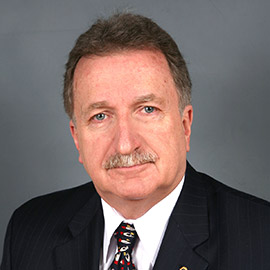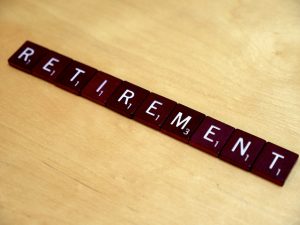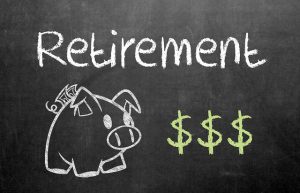retirement
Retirement is the process of hanging up your boots and predominantly ending your employment tenure. Many people retire when they fail to find the energy and the enthusiasm to work anymore.
Democrats and Republicans Have Similar Views on Retirement
/by AdminA new survey has found that the opinions of Democrats and Republicans are very similar with regard to retirement. Both accepted that they are not saving enough but still showed optimism. They also admitted that they don’t want to work post-retirement. They confessed to being overwhelmed by retirement and showed a lot of trust in their financial advisors.
 The Research on Republican and Democrats Views on Retirement
The Research on Republican and Democrats Views on Retirement
The research mapping the views of Democrats and Republicans on retirement was conducted by Lincoln Financial Group. It shows that the views of both do not differ much. The survey was entitled as Measuring Optimism, Outlook, and Direction. It was also known as the MOOD study.
Managing Retirement
About 26 percent of Democrats accepted that they were managing their retirement planning well. Likewise, 25 percent republicans admitted to the same. The President of Retirement Plan Services at Lincoln Financial, Jamie Ohl stated that these are very low numbers.
In the same survey about 83 percent of Democrats said that they are optimistic about retirement even after the fact that they had little confidence in planning the retirement. About 80 percent of Republicans showed this confidence too.
Being Overwhelmed
In the survey, about 70 percent of Republicans admitted that the effort required to understand their retirement plan options overwhelms them. About 68 percent of Democrats also accepted the same thing. Both types of respondents also thought that trying to understand the insurance options overwhelms them. About 62 percent of Republicans and 64 percent Democrats admitted to the same.
Working in Retirement
Nearly 9 in 10 respondents belonging to both the parties confessed that they don’t want to work past retirement. Ohl says that it is challenging for the industry to reduce the gap between not wanting to work in retirement and lack of confidence in planning the retirement.
Family First
The survey also highlighted that Republicans and Democrats want to put their family first when managing the financial planning so that the families can have enough money to meet all the vital financial needs. About 90 percent of Republicans and 87 percent of Democrats admitted to the same.
Trust in Financial Advisors
About 9 out of 10 respondents comprising of Democrats and Republicans stated that they have more confidence with regard to financial security when they get the opportunity to work with a financial advisor. Nearly 95 percent of respondents said that they had full faith in the financial advisors’ capacity to plan their retirement.
Federal Employee Retirement Eligibility by Kevin Wirth
/by Kevin WirthKevin Wirth explains retirement eligibility for Federal Employees
 Kevin D. Wirth – Retirement Expert
Kevin D. Wirth – Retirement ExpertFor many people, “saving for the future” means just exactly that – setting money aside for “some day.” But as the years clip by, it becomes more important to have an actual plan for retirement, and a big part of that plan includes knowing the time when you can actually separate from employment service.
If you are a federal employee, the good news is that your retirement program makes it somewhat easier to track when you can retire. For example, retirement eligibility is determined by your age, as well as the years of service that you have put in.
In many instances, employees can retire and receive an immediate retirement benefit. This refers to a benefit that begins within 30 days from the date that he or she stops working. Provided that the employee meets one of the following criteria, they would be entitled to an immediate retirement benefit:
- Age 62 with 5 years of service
- Age 60 with 20 years of service
In some cases, you may also be required to have reached the MRA, or Minimum Retirement Age, in order to receive an immediate retirement benefit. Upon meeting the MRA, you may be required to either have 10 or 30 years of service, depending on your circumstances.
The following chart outlines what your MRA would be, based upon your year of birth:
| If you were born: | Your MRA is: |
| Before 1948 | 55 |
| In 1948 | 55 and 2 months |
| In 1949 | 55 and 4 months |
| In 1950 | 55 and 6 months |
| In 1951 | 55 and 8 months |
| In 1952 | 55 and 10 months |
| In 1953 – 1964 | 56 |
| In 1965 | 56 and 2 months |
| In 1966 | 56 and 4 months |
| In 1967 | 56 and 6 months |
| In 1968 | 56 and 8 months |
| In 1969 | 56 and 10 months |
| In 1970 and after | 57 |
Source: OPM.gov
A federal employee may also be eligible for early retirement. This could be the case in the situation of an involuntary separation from service, as well as in the case of a voluntary separation such as for a reduction in the workforce or during a major reorganization.
In order to be eligible for retirement in these types of situations, an employee must either be age 50 and have put in at least 20 years of service, or be any age and have put in a minimum of 25 years of service.
When Will Your Benefits Begin?
Are far as benefits beginning, it is important to be mindful of the actual date that you retire, as well as the date that you legally attain a certain age. For example, a person actually legally becomes a given age on the day prior to his or her date of birth.1 This can be significant when choosing the date of retirement, as it could make the difference between your annuity benefits beginning the month of separation from service, or the month following.
More from Kevin Wirth
Getting Started Early with a Successful Retirement by Kevin Wirth
Sources
- FEDweek (http://www.fedweek.com/reg-jones-experts-view/the-first-day-you-can-retire/)
Survey Reveals How Men and Women Think about Retirement Differently
/by AdminMen and women have always perceived things differently. Apparently, retirement is not so different. Men and women think about retirement differently, talk about it differently and share their ideas differently. Their ideas about retirement and employer contributions are also very different. Their trust on investment methods is also very different. All these factors were revealed in a recent survey.
Results of Survey on How Men and Women Think About Retirement
 The survey was organized by a renowned record keeper and retirement plan provider OneAmerica. The survey found that men think of retirement more often than women. About 69 percent of men think about retirement every month. In contrast, just 55 percent women think about retirement on a monthly basis.
The survey was organized by a renowned record keeper and retirement plan provider OneAmerica. The survey found that men think of retirement more often than women. About 69 percent of men think about retirement every month. In contrast, just 55 percent women think about retirement on a monthly basis.
Men also talk more about retirement with their colleagues. About 29 percent spoke about it with the colleagues. This percentage is just 22 percent in women which clearly indicates that women are more conservative about talking retirement plans with their colleagues. The survey also discovered that men were more eager to cite a story about retirement in the news or media. The percentage of men admitting to that was 16 percent when compared to 11 percent for women.
Monitoring Frequency
About 53 percent of men monitor their retirement plan on a monthly basis. Women do so less frequently because only 36 percent admitted to monitoring it monthly. While men and women have an understanding that knowing how they can stack the money to meet their goals is important, about 54 percent of men said that it was very important as compared to 48 percent of women.
Employer Contribution and Investment Options
The ideas of men and women on retirement contributions made by the employers are also very different. In this area, women expect the employers to match the contribution as compared to men. About 64 percent of women admitted that they gave importance on the employer match while only 61 percent men gave it importance.
Men and women also think of pondering various investment options in a different manner. About 29 percent of men think that investment options are valuable and the percentage of women considering investment options to be vital are just 21 percent.
Different Opinions
It seems that men and women will always have different opinions on everything. They can hardly agree on think about retirement the same way because their minds work differently.
Retired Veterans May Not Want to Retire in Indiana
/by AdminMost of the retirees wish for making their retirement more exciting by retiring at a place where they can get all the facilities and live peacefully without the need for spending a lot of money on daily expenses. If you are among the retired veterans then you may want to keep Indiana away from the list of ideal destinations to retire. Why? A recent survey has the answers.
 What Do Retired Veterans Prefer Post Retirement?
What Do Retired Veterans Prefer Post Retirement?
It is a well-known fact that the average age of retirement for the officers is 47. As per Jill Gonzalez, who serves as an Analyst at a Washington-based personal finance site WalletHub, most retirees are left with 3 challenges at this stage. The first challenge is to re-enter the job force. It is the most likely challenge. The second challenge is to seek only veteran-specific jobs and the third challenge is to get VA care and benefits.
The Ranking
The company also ranked the best and worst states for retired veterans. In the list, Indiana was fourth from the bottom. The main reason for the low ranking was that Indiana partially taxes military pensions. The other reasons were a lack of VA health facilities and the low quality of the available VA health facilities. These reasons make Indiana a military retiree deterrent, revealed Gonzalez.
The Main Quality Parameters
WalletHub has ranked the states by measuring them on various quality parameters such as access to VA facilities, access to arts, access to leisure, the cost of living data, housing costs, the state tax on military pensions, the number of doctors per capita, etc. In total, 20 such quality parameters were used by the company to prepare the list.
The gist of the matter was also shared by Gonzalez. She said that the retirees must always know what they are getting into when they look for an ideal place to retire. They should particularly have a look at the state’s tax policies.
The List
The list prepared by WalletHub had 51 states and the overall topper of the list is Alaska. It is closely followed by South Dakota and Montana. Alaska is number one in providing the best economic environment while Montana is number one in providing health care and quality of life. The worst place to retire for retired veterans is Rhode Island where the economic environment and health care are nearly the worst and the quality of life is not so good either.
Combination of Strategies is the best bet for Steady Retirement Benefits
/by AdminPeople who are looking for steady retirement benefits income cannot rely on a single strategy, says a recent study. The study also stated that the expectations of retirees are very high and contradictory. It pointed out the strategies that offer mental peace to retirees. It also stated that all strategies have their own side effects and none of them can outperform.
The Study Judging the Strategies for Steady Retirement Benefits

The study that examines the strategies was conducted by the TIAA Institute. It studied three strategies opted by retirees. The list includes a systematic withdrawal, a guaranteed lifetime withdrawal benefit, and a partial variable immediate annuity. The study has concluded that none of these can offer long term satisfaction to the retirees. A combination of all these strategies might be the answer.
The study also revealed that the retirement income security can be enhanced depending on the withdrawal strategies only when the participants start to withdraw the benefits. But, the goals of every participant can affect the strategy that’s offering the best results for a particular situation.
High Expectations
The study also revealed that most retirees look for many things when they get retired. They want strategies that offer inflation protection, retirement security, asset growth, liquidity and the potential for an estate. All these goals might conflict with each other which make it impossible to satisfy a retiree with a product for the long term.
Peace of Mind
The guaranteed lifetime withdrawal benefit strategies and partial variable immediate annuity strategies perform better when it comes down to offering peace of mind to the retirees. The systematic withdrawal strategy allows for greatest flexibility in the management of retirement assets by the retiree.
The Side Effects
The study has also exposed the fact that there is no strategy that has no side effects. Some of the side effects are high fees that are a part of guaranteed lifetime withdrawal benefits, loss of liquidity that comes by adopting partial variable immediate annuity strategies and less retirement income security which is a part of systematic withdrawal strategies
No Strategy Outperforms
The study also compared the three strategies by making use of the historical monthly returns data. It announced that though many people use their conventional wisdom and put their faith in a guaranteed lifetime withdrawal benefit product strategy because it allows a guaranteed minimum amount of lifetime income, no strategy is a clear winner and can assure steady retirement benefits.
Study Reveals 4 Stages of Retirement
/by AdminA recent study has revealed 4 stages of retirement enjoyed by every retiree. It includes the time just before retirement, time just after retirement and the time when the person has been retired for a few years. The study mapped the feelings and comments of retirees in each of these stages.

The Study on Stages of Retirement
The study was conducted by Age Wave and Bank of America Merrill Lynch. It was named Leisure in Retirement: Beyond the Bucket List and was conducted on more than 3,700 adults who were more than 25 years of age and came from all walks of life. The study focused on finding out hopes, dreams, priorities and challenges of leisure in retirement.
Stage 1
Stage 1 includes the people who were to retire in the next 5 years. These people were eager to retire, looked forward to it and wanted time for nonwork-related activities they enjoy. One respondent said that he was dreaming about all the fun things he can do after retirement. He added that thinking about these things made him excited.
Stage 2
In stage 2, the people who had retired were studied. About 78 percent of these people said that they now had time to do whatever they want. About 92 percent also said that they felt more free after retirement as they get to do whatever they want on their own terms.
Stage 3
When a person retires, he or she feels more relaxed after getting away from work. He or she also appreciates their leisure time a bit more. The retirees in this stage also feel happier, more content and confident. They lose the feeling of anxiety and get more comfortable with their post work identity. Some retirees also confessed that they felt a twinge of guilt when they failed to use their leisure time more productively. About 74 percent of retirees in this stage also admitted that they had the power to structure their free time more effectively when compared to stage 1.
Stage 4
The final stage in the stages of retirement analyzed the feelings of people who had been retired for more than 15 years. These retirees focus more on being healthy and maintaining their independence. They spent almost all of their leisure time in either connecting with their families or relaxing. Retirees in this stage spent most of their leisure time in doing tasks they were familiar with rather than trying out new leisure activities.
Federal Employees Need Retirement Help: Survey
/by AdminA recent survey has revealed that most of the government employees need a lot of help in learning about their retirement benefits. They need someone to guide them on their finances so that they can have a peaceful retirement. The survey also exposed the fact that most federal workers would prefer to retire at the minimum retirement age if they were to be financially secure. They would also invest in the TSP more if they could get the benefit of retiring early.
Federal employees are Least Informed
The survey was conducted on 557 federal employees. About 33 percent of them admitted that they were well informed about their retirement benefits. Only around 6 percent said that they were fully informed. The survey was conducted by Silver Light Financial and Federal News Radio.
Feds Need Training
In the same survey 74 percent of the respondents admitted that they need training on retirement benefits related topics and they don’t need any incentive to attend that training.
Financial Confidence
About 66 percent of the respondents admitted that they would prefer to retire as soon as they cross the minimum retirement age if they think they were financially confident. About 36 percent of respondents said that they expect to retire at their MRA. About 53 percent of those who were not expecting their MRA said that they won’t retire because they believe they won’t be able to financially sustain their lifestyles.
TSP and Early Retirement
Federal employees also said that they were willing to invest more to their Thrift Savings Plan if it could help make a meaningful impact on their retirement. About 93 percent retirees admitted it. They also wanted to reduce their retirement age and about 60 percent of the respondents said that they would add at least 5 percent more to the Thrift Savings Plan if they have a better understanding of it.
The Gap
It now remains to be seen whether the results of the survey would motivate the government agencies and the retirement investment service providers to better educate the federal employees. It is clear that if federal workers could get free training on retirement benefits, they would feel more secure about retirement and would not worry about their financial stability after retirement. Their situation is a lot similar to a person who has got a vehicle and a destination but doesn’t know driving.
Late Retirement is Good for Health: Study
/by Admin
A recent study has revealed that late retirement is good for health. People who retire at an older age have better health when compared to the people who retired at a comparatively younger age. The study involved subjects who were not retired and the ones who were retired. The study was conducted by following about 3,000 participants who said that their health would not impact their decision to retire.
The aim of the Late Retirement Study
The study was published in the international Journal of Epidemiology and Community Health in the month of March. It was a longitudinal study that was aimed to find the relation between mortality and retirement age among unhealthy as well as healthy retirees. The study also aimed to find out whether socio-demographic factors had an impact on the relation between mortality and retirement age. The study was done for more than 18 years.
The Result of the Study
The study revealed that the healthy retirees who were at least one year older at the time of retirement had 11% less risk of all-cause mortality. The study also divulged that the unhealthy retirees also had a lower risk of mortality when they chose to retire later. The results were independent of a wide range of socio-demographic, health and lifestyle cofounders. It must be added here that a cofounder is a third variable that may be responsible for the correlation between two separate variables.
The Conclusion
Researchers concluded that opting for early retirement may be a risk factor for mortality and the U.S. adults may enjoy a longer lifespan if they have a prolonged working life.
The Subjects
The subjects of the study were about 3,000 participants. About 2,000 of these participants were healthy and about 1,000 were unhealthy. The average follow-up period of the study was 16.9 years. After that duration, more than 12 percent healthy retirees had died. The percentage of unhealthy retirees who died during the same time span was more than 25%. The study only followed those participants who admitted that their health would have no impact on their decision to retire.
The Researchers
The researchers who conducted the study regarding late retirement were from Oregon State University. Psychologist Robert Stawski who was a key member of the team of researchers said that the nature of the work is not important. The people who stay active for a long time maintain mental, physical and social engagement and have a longer life.
OPM Reduces Retirement Benefits Backlog Again
/by AdminOPM has made considerable progress in clearing up the backlog of pending retirement benefits cases in the month of April. Although the main reason behind the reduced amount of backlog could be the fact that the agency received fewer applications, still the efforts put in by the agency are certainly showing up. It is being predicted that if the agency keeps working at the last month’s pace, it will reduce the backlog considerable by the end of the year.
Retirement Benefits Claims Processing Data
The recent data received on claims processing has revealed that the agency processed several more claims than the number of claims received in the month of April. OPM has processed nearly 12,000 pending claims in April while it received just more than 7,000 new claims. The efforts made by all the people working in the agency have brought down the total outstanding backlog by 24%.
Comparison with March’s Performance
The backlog was just over 19,000 in the month of March but now, at the end of April, it’s just over 14,500. The agency received over 7,000 new claims in the month of April, which is far higher than the 5,741 claims received in March.
The Average number of Days to Process Case in 60 days or less was 44 in March which increased to 50 in April. The Average number of Days to Process Case in more than 60 days was 118 in March and it stood at 92 in April. The agency processed 88% of claims in 60 days or less in the month of March and this percentage was just 76% in the month of April.
The Serious Problem
The biggest challenge for OPM that seems to be of importance is that it needs to bring the backlog down and make it below 10,000. Unfortunately, the agency hasn’t been able to achieve this goal in the last two years. It was just over 11,600 in December 2014 and about, 11,400 in December 2015.
The Positive Approach
One positive thing that needs to be analyzed with regard to retirement benefits claims processing is that the backlog was more than 22,000 in February. The agency has controlled it a lot in just two months. It can also be hoped that if the agency shows the same speed in chipping away the backlog that it has shown in the month of April, the backlog would be less than 10,000 by the end of 2016.
Massachusetts State Retirement Board Fails to Pay Correct Retirement Benefits
/by AdminA recent audit has uncovered the fact that the Massachusetts State Retirement Board made several mistakes in distributing the retirement benefits. The people who have been dead for some time were paid the benefits while on the other hand, the spouses of the dead people were not given adequate payments. After knowing of the findings, the agency has initiated steps to rectify the situation which pleased the auditors who found the error.

How were the Retirement Benefits Errors Dug Up?
The major flaw in the distribution of retirement benefits was uncovered by State Auditor Suzanne Bump. The office of the auditor conducted an investigation into the Massachusetts State Retirement Board (MSRB) and found that an amount of about $700,000 was paid to dead retirees. The agency also failed to provide deserving benefits to surviving spouses of retirees.
Why the Error Occurred?
The report submitted by Bump says that the error occurred because the agency did not know of the new requirements to access Social Security’s Death Master File. The responsibility of making the agency aware was with LexisNexis, which was contracted to work with the MSRB. This error led to the distribution of pension to all the people who died during the timeframe of March 26, 2014, and August 31, 2015.
The Numbers
The error resulted in paying up retirement benefits to 105 pensioners who were dead. The error also ensured that 44 spouses of the deceased pensioners did not receive any money of their spouses. A sum of $271,000 was not given to the surviving spouses while $687,000 was offered to people who are dead.
The Rectification
As soon as MSRB and LexisNexis knew of the grave error, they worked to get back a sum of $608,000 that was accidentally offered to dead people. The agencies also worked in conjunction to give away all the deserved payments to the surviving spouses. They have offered almost all the money to the surviving spouses.
The Compliment
Bump was very pleased about the steps taken by the agencies. He said that he was pleased that the MSRB has worked fast to correct underpayments, get back the funds and ensure this scenario never occurs again in the future. He also added that the step taken to rectify the retirement benefits related mistake would play a key role in getting back the public’s trust in government.
TSP Board May Need More Funding
/by AdminThe Thrift Savings Plan, or TSP Board may need more funding for the fiscal year 2016. The main reasons behind it are the cyber security upgrades and the external audits. Another reason is due to the increasing membership. The board is not sure about the extra money needed for the budget, but plans to lay it out soon.
 TSP
TSPTSP Board Budget Data
The Federal Retirement Thrift Investment Board (FRTIB) was assigned $220 million in 2016. The board is predicting that it could spend $151 million even before the beginning of third quarter. The main reason behind such spending is the need to have resources that help in cyber security upgrades and external audits.
The Announcement
The announcement regarding the need for more funding was made by the FRTIB executive director, Greg Long. He made this announcement during the monthly meeting of the board that was held on April 25. He said that though the agency needs to do a bit of work regarding the budget allocation, it seems almost certain that they will need more money from the board. The estimate regarding the amount of extra money required would be clarified next month.
The Cost of Cyber Security
The main reason behind the agency running ahead of schedule on the budget is that it is putting a lot of money in to boost its cyber security. The agency is working with external auditors to finish a study of best practices with regard to cyber security in the private sector firms.
More Data and Better Service
The agency is also focused on using more data to take better decisions and offering better communication and services to the TSP participants. The TSP enrollment is higher than it has been before, and it is expected to continue to grow until 2018.
About 89% of people who have opted for Federal Employment Retirement System (FERS) have enrolled in TSP. The number of active duty military members who are enrolled in the TSP is about 44%.
Call Centre Service
In order to provide better service to the growing TSP members, the agency is aiming to create a better consolidated call service center as a part of the Expanding Participant Retirement Engagement Services and Solutions (ExPRESS) contract. The draft related to the RFP of ExPRESS participant call center services is scheduled to be released during the first week of May according to the board.
Americans Believe the Next President Must Value Social Security
/by AdminSocial security remains the topmost agenda for the Americans and they want the next President to give high importance to it, reports an AICPA survey. The older respondents were more inclined to keep social security as a core issue. People also want the next president to remember key issues like reducing the trade deficit and lowering the interest rates.

Social Security Gets Popular
Two-thirds of the Americans (sixty-four percent to be precise) who participated in the survey think that the government should give more importance to ensuring that social security doesn’t run out of money.
The other key issues they want shown importance in the new administration are: the reduction of the federal deficit which gained the trust of 44 percent of people, decreasing unemployment which was supported by thirty-eight percent people, and reducing taxes which were supported by thirty-six percent people.
Chair of the AICPA’s National CPA Financial Literacy Commission, Mr. Gregory Anton commented that the survey has shown that people wish for the better solvency of social security as well as its impact on their retirement security. The survey which included 1,005 US adults was conducted by Harris Poll on account of AICPA.
Age Matters
About seventy-four percent of participants who are older than 65 stated that social security should be highly prioritized by the next president. Only 66% of respondents in the age group of forty-five to fifty-four year and thirty-five to forty-four-year-olds gave utmost priority to social security. The percentage decreases with age. About 53% of eighteen to thirty-four-year-olds think that social security should be the top priority of the next President.
Other Key Issues
The other key issues also got support from the respondents. About twenty-five percent of respondents felt that international trade deficit should be reduced by the new President. About 22% wanted the next President to keep the interest rates low.
No Change in the Economic Scenario
Though a majority of respondents stressed the need to make social security stronger, they were not too hopeful with regard to the betterment of the economic situation due to a new President. Fifty-four percent of the respondents said that they were not expecting the new President to change the economic picture. Only twenty-one percent said that it would improve while nineteen percent said that it may weaken further.
How to be prepared while nearing retirement
/by Matt PierceOnce you are nearing retirement, you need to make the adequate preparations or you won’t end up…well, financially sound, to say the least. Today, we share 3 approaches that you can utilize and make your future secure once you make the transition from military.
The financial actions are not easy things to talk about but if you are nearing the time when you want to hang up your boots, you will need to perform three tasks. Here are those 3 tasks:
1. Budgeting:
Military people normally manage their budgets quite well. When you make the transition from military life to the civilian kind, you need to have at-least 6 or 12 months’ salary in your account to be able to make both ends meet. Yes, you might be able to find a great job soon but still the expenses that were covered before like child care, food and healthcare will have to be paid for now and you don’t want to be having your hands in your head at the time.
2. Save and invest
Military people are also generally good savers. Now is the time that you need to use your saving and your investing skills with aplomb. Try to save as much as you can, make contributions to your retirement savings plans or find other ways of investing. Just be aware that the money you have right now, can either be spent, or saved and doubled.
3. Protect:
Upon transitioning you also need to make a life insurance replacement. Within the first 8 months of leaving the military, you can convert your SGLI to a Veterans Group Life Insurance and there is no need for a medical exam either. You will most probably be able to get a great deal.
So, if you are nearing the transition, start planning ahead already!
Retirement Benefits to Become History in Kennesaw
/by AdminThe elected officials of Kennesaw will no longer get any retirement benefits. This was decided unanimously by the city council on Monday. The officials who are already getting the benefits would be allowed to get them in the future, however, all the people who are elected from now on won’t be allowed these benefits. This is not the first move made by the council as many members have already let go of their insurance benefits recently. These moves will save thousands of dollars for the city.
The Previous Retirement Benefits Plan
Before the passing of this mandate, the members of the city council, as well as the mayor were vested after taking up their jobs. Their benefits accumulated with each year they served the post. From now on, the mayor and all the council members won’t get any benefits as they have let it go willingly.
The Decision
This decision was taken by a 4-0 majority and the only council member, not present was Councilman Nimesh Patel. Mayor Derek Easterling was highly pleased with the decision. He said that it’s the right thing to do and everyone that ran in November was in favor of this decision. He also added that approving this decision is a proof that the council is taking actions on the basis of the promises it made.
Jim Sebastian, a council member who is the only one to be a member of the previous and current council also pledged to not collect his pension. Though he had previously said he was automatically enrolled for the same.
The Savings
If the statements given by Miranda Jones, Assistant City Manager are to be believed, this decision would save about $16,000 a year for the council. The city had already got savings of worth $78,000 when the council members let go of their dental, vision, medical and life insurance benefits. These figures were given by Mr. Easterling a few weeks back. Hence, the city will end up saving $94,000 from both these council decisions.
The Ordinance
Apart from letting go of the retirement benefits, the council is also taking some other crucial decisions. It passed an ordinance that assists in limiting the consumption of malt beverages or craft beers on the premises. An additional fee of $850 has been levied for acquiring package/pouring license. The $200 growler fee is unchanged and it needs to be paid too.
This new bill can help bestow universal retirement coverage
/by AdminThe importance of retirement plans can never be undermined. In accordance to the preceding statement, there has been a new legislation that has come to public knowledge in the past week. This governs the establishment of a new retirement coverage plan for all the employees of the state that are currently devoid of the luxury of having a workspace plan. This will be built on the retirement coverage steps that have been taken recently at the state and the federal levels.
New retirement coverage plan for all?
Sponsored by Senator Jeff Merkley of Oregon, the American Savings Act would go on and establish a universal savings account known as the American Savings Account. As the name indicates, the plan is meant to cover all the working Americans completely regardless of their designation or the size of their employers.
This plan was always going to come pertaining to the shifts that we have seen far away from the pension plans and in to the specific contribution plans that has made around 68 million deserving Americans live without a workspace plan.
This lack of retirement coverage has added a lot to the retirement savings shortfall in the country with 14 thousand dollars being the median account balance for the people nearing their retirement. This was indicated by David Madland, who is a Center for American Progress’ senior fellow.
While we are still to see more details of this plan, we can expect it to go a long way in helping those who don’t have any ways of securing their lives after retirement. The initiatives that led to the spawning of this plan can’t be overlooked and their importance can never be undermined. Here’s hoping that this bill gets passed and gets put in to practice as soon as possible.
The American Retirement Saving Crisis
/by Admin It’s no news that the Americans of the modern age are facing a severe retirement crisis. We are already in the early-million stage and the stats are expected to get tripled by 2050 and we could be seeing around 25 million poor (or near-poor) retirees. Not to mention that this poverty rate hasn’t been seen or observed since the country faced the Great Depression.
It’s no news that the Americans of the modern age are facing a severe retirement crisis. We are already in the early-million stage and the stats are expected to get tripled by 2050 and we could be seeing around 25 million poor (or near-poor) retirees. Not to mention that this poverty rate hasn’t been seen or observed since the country faced the Great Depression.
The retirement crisis:
This is not a matter that can be taken lightly. This retirement crisis will lead to poor population and that will create a social safety strain that can completely rattle the federal, state and local budgets for the coming decades. Many surveys reveal that people consider their retirement security as the biggest financial concern.
Americans that fall in the age group between 40 and 55 have an average retirement balance of around 14 thousand dollars. Having said that, experts claim that they will require around 20 times that to maintain the standard of living after they hang up their boots. The savings rates can be blamed but the real culprits are the expenses and the meager wages. The student loan debts also play a huge role in making this crisis a legitimate concern for the American government and the workers.
There is a stark need of more employer-based retirement plans as well. Around 50 percent of the employers don’t offer retirement plans and this has a huge effect to the overall development of the crisis. Apart from this, many employees don’t consider it wise to save for retirement until its too late. So, if you are nearing your retirement and you still haven’t saved up for retirement, start doing so. If you are still a decade or two away, you need to start retirement planning as soon as possible as well because it’s never too early.
The impossibility of retirement imposed by lack of money
/by Matt Pierce
Money is definitely one of the most important (if not the most important) part of the lives of the majority today and the lack of it can cause a multitude of problems- also making retirement impossible. The pensions and the retirement plans like the 401(k) plan offer matching contributions mainly. Apart from this, they also offer the best way to build your retirement savings- by making automated pay check deductions.
Making retirement decisions is very important and making these decisions “Sooner rather than later” is even more important. When you reach your retirement age, and then take a look at your finances and bills, you might realize that you don’t have enough Social security benefits (for example) and would like to work more in order for them to reach a substantial amount. This is the reason why it’s always recommended to make the decision of starting up a retirement plan as soon as you possibly can.
Experts believe that you should ideally begin saving decades before you decide about hanging up your shoes. The biggest advantage in this regard is the power of compounding. Your asset will be capable of generating more and more earnings if you give it more time to do so.
If you are over 50 and still haven’t taken any retirement plans, then you can make use of the IRS rules that would allow you to make the catch-up contributions to plans such as the 401(k) one or in the IRA. These rules will allow you to make a contribution as great as 6000 to your accounts beyond the specific limit that you would ideally have to abide by.
So, all in all, if you can feel your retirement from far away at this point, then you should start saving up money to ease your life when you would really want it to be easy.
Retirement savings to change in the new year
/by Matt Pierce Retirement planning is a must in the world of today. In order to always stay updated with the latest trends and developments in the retirement savings paradigm, you need to know it all. During 2016, there are some stark changes to be seen made to the normal retirement accounts, social security and other areas. We have highlighted some of these areas:
Retirement planning is a must in the world of today. In order to always stay updated with the latest trends and developments in the retirement savings paradigm, you need to know it all. During 2016, there are some stark changes to be seen made to the normal retirement accounts, social security and other areas. We have highlighted some of these areas:
Ways retirement savings would change:
The new myRA:
myRA has received a lot of fame and recognition from everybody since it has been released. The reason is that it’s almost perfect. There is no registration fee and the government has guaranteed that it’s never going to lose its value. It’s the dream come true for officers that are thinking about making their first retirement investment.
Obama’s budget strategy:
The budget proposal laid forward by the President indicated that the tax breaks that would normally be applied for the unrealized appreciation of retirement accounts will be eliminated. IT’s to be noted that this has not been approved yet.
Increase in the saver credit threshold:
People who make a considerably better amount of money will have a change to qualify for the saver’s credit. The limit has increased from 250 to 30 thousand and 750 dollars for the single filers. For the married couples, it has risen to 61,500 dollars.
Savers to fall in need of a new “file and suspend” methodology:
Another change that will affect retired couples. Some federally employed couples have tried to scoop away the SS benefits unlawfully and this is now going to change.
No restricted applications; not anymore:
The restricted application option is now being eradicated. This would eliminate the luxury available to couples to file the “restricted application” once they reach the full retirement age and get spousal SS benefits.
Is your boss helping you prepare for retirement?
/by Admin
Bosses are ideally not looked at with a lot of pure love and respect throughout the country. No matter how the employees might seem or behave from the outside, most of the times they don’t feel the same internally. The situation though never gets changed for an employee as whether they like their boss or not, they have to deal with them.
Bosses are not always that bad though; especially if they do one of the following things for you; read on to know how your bosses are helping you retire better:
Bosses help you prepare for retirement:
- Auto-enrolment in a 401(k): We don’t like to live on pensions anymore. This is the reason why at many places, 401(k) plans are preferred these days. Some workplaces in the recent years have decided to enrol all the employees in some 401(k) programs to help them ensure their future.
- Giving you 401(k) money: Some bosses also go the extra mile and they help you even more by putting their own money in your 401(k) accounts. This entices the employees to make contributions themselves.
- Giving you HAS money: We normally don’t care enough for our health savings and if your employer is actually putting money in your health savings accounts then you need to value and respect them a lot more.
- Insurance options provision: If your employer also provides you with insurance options that are wide enough for you to make a decision, then you are working under a true gem. Don’t let yourself lose them.
- Professional and insightful aid: Many employers spend thousands of dollars trying to get financial planning help. Many bosses are capable enough to provide them this insight free of cost. If your boss does this, then you can know that you are saving a lot of money.
Can federal employees get phased retirement
/by Matt PierceWe all know that the Moving Ahead for Progress program authorized the phased retirement program but are the federal employees of the US eligible to apply for it and eventually enjoy its benefits? In 2014, the office of personnel management released a comprehensive report that comprised of the final rules related to the program that will guide all the agencies and the employees about the people that should ideally elect phased retirement. It also included all the benefits that are provided by it, how the pension and the annuity is calculated during the whole phase and how the exit from the program can be made without any hassle.
The phased retirement program:
In general, all the agencies working under the umbrella of the federal government can offer phased retirement programs for their employees. However, this can’t be termed as a “right” of the employees. If it were, it would have meant that all the full-time employees who have worked for the preceding three years and meet the age and year of service requirements (for immediate retirement) and are part of the CSRS or the FERS can be considered eligible; however that is not the case. All the employees that are set to get mandatory retirement including firefighters, air traffic controllers or the law enforcement officers should not participate.
OPM indicated that all the participants must have spent around fifth of their service time mentoring coworkers for them to be considered eligible. Also, phased retirees are obviously going to have to deal with deductions in retirement annuity, social security and other funds. However the health benefits get provided in the same manner and are subject to no deduction.
While the phased retirement program has its pros, there are some cons as well and if you are eligible, you need to think long and hard before making a decision.
.






